|
|
|
Research

|
Tracing of excited-state species in crystals and solution
|
|
Polynuclear transition-metal complexes frequently constitute the active sites of both biological and chemical catalysts, provide access to unique chemical transformations that are derived from specific metal-metal interactions and cooperation. Moreover, such coordination compounds very often exhibit interesting optoelectronic (e.g., intensive photoluminescence of d8 or d10 transition-metal complexes), or magnetic properties (e.g., mixed-valence complexes with metal centres linked by cyanide or halogen bridges). The aim of our research is to deeply investigate dynamics of light-induced processes, which occur both in crystals and in solution, with the emphasis put on the direct determination of structural changes (bond distance changes, breaking or forming new bonds) via advanced experimental methods supplemented by theoretical computations. We focus our attention on charge transfer processes taking place in multicentre complexes based mainly on Cu, Ag, Au, and also on bridged transition metal complexes with the general structure of LnM1–bridge–M2Lm (M1, M2 = Fe, Co, Cu, Mn, etc., bridge = CN, SCN, pyrazine etc.; Ln, Lm = ligands). We are interested in relationships between their molecular structure, electronic configuration and charge distribution, metal-metal interactions (argentophilic, aurophilic, etc.) and metal centre communication through different linking groups, ligand character, and the macroscopic properties of substances, such as, spectroscopic features (e.g., luminescence).
|
|
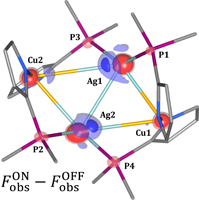 |
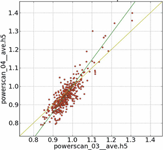 |
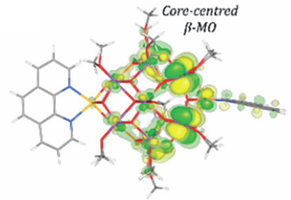 |
|
|
|
|
Synthesis and characterisation of new photoswitchable materials
|
|
Currently, one of main goals of chemistry and physics is to develop new materials that are able to respond rapidly and reliably to changes in local environment, and send out signals that let us know what is happening. Transition metal switchable complexes, thanks to the specific interactions and presence of the groups that can exist in many isomeric forms, as well as, their interesting optoelectronic and magnetic properties, very often fulfil these criteria. It is of great importance to sensibly control such properties at the molecular level, so as to apply this knowledge to generate macroscopic materials for specific applications. Consequently, our research is dedicated to thorough and systematic investigations of the dynamics and nature of light-induced nitro group isomerisation reaction occurring in crystals of selected 4th-row transition-metal coordination complexes, majorly Ni, Cu and Co. Such choice is dictated by their availability, price, and, most importantly, their relatively easy modification facilitated by exchanging various ligands (also by introducing electron donating or withdrawing functions to such ligands), therefore allowing for considerable structural diversity, molecular flexibility, different molecular environment in a crystal, and also various numbers of the NO2 groups attached to a metal centre (also via different binding modes). We believe that the results will provide us information on the modifications needed to obtain promising switchable materials characterised by desired reversibility, conversion percentage and stability.
|
|
|
|
|
Crystal engineering
|
|
Crystal engineering methods are useful when analysing molecular motifs, relative crystal stabilities and origins of different properties of crystalline materials. We apply these tools to supplement our photocrystallographic studies and also to investigate crystals and cocrystals of boron-based compounds, pharmaceuticals and luminescent complexes, which have been among our interest for several years now.
|
|
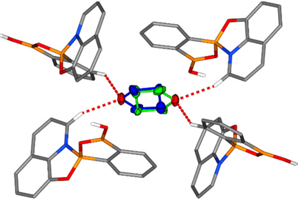 |
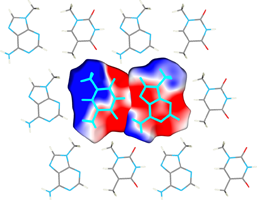 |
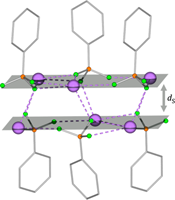 |
|
|
|
|
Method development and non-standard crystallography
|
|
Our scientific interests also cover preparation of useful tools (scripts, programs, methods) and construction of devices for various crystallographic applications, including photocrystallography, experimental charge density studies and high-pressure crystallography. Method and software development is especially important in the case of processing and analysing of the time-resolved photocrystallographic data, for which the available tools are very limited.
|
|
 |
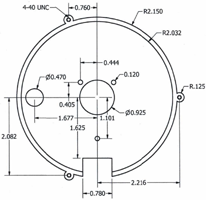 |
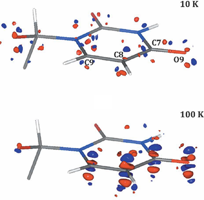 |
|
|
|
International and Domestic Collaboration

Paul R. Raithby |
Lauren E. Hatcher |
Dominik Schaniel |
Claude Lecomte |
University of Bath
Bath, United Kingdom |
University of Bath
Bath, United Kingdom |
University of Lorraine
Nancy, France |
University of Lorraine
Nancy, France |
|
Sébastien Pillet |
Václav Petříček |
Andreas Roodt |
Damian Paliwoda |
University of Lorraine
Nancy, France |
Czech Academy of Sciences
Prague, Czechia |
University of the Free State
Bloemfontein, South Africa |
SOLARIS Synchrotron
Kraków, Poland |
|
Krzysztof Durka |
Sergiusz Luliński |
Włodzimierz Buchowicz |
Liliana Mazur |
Warsaw University of Technology
Warsaw, Poland |
Warsaw University of Technology
Warsaw, Poland |
Warsaw University of Technology
Warsaw, Poland |
Maria Curie-Skłodowska University
Lublin, Poland |
|
|
|
CONTACT
|
|
|
 |
Department of Chemistry, |
|
University of Warsaw |
|
Żwirki i Wigury 101, 02-089, |
|
Warsaw, Poland |
|
(109A Office, Radiochem. Bldg) |
 |
katarzyna.jarzembska@uw.edu.pl (K.N.J.) |
|
rkaminski85@uw.edu.pl (R.K.) |
 |
+48 22 55 26 757 (K.N.J) |
|
|
|
|
|
|
|
|